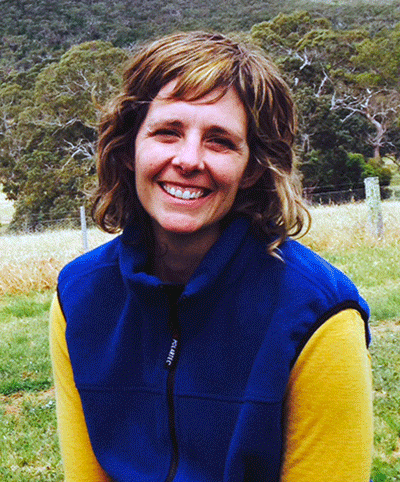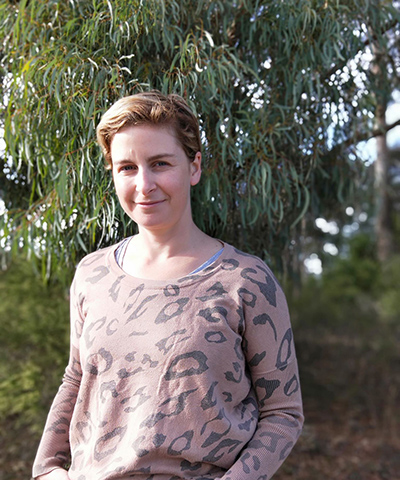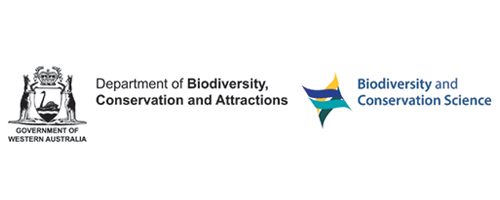
Project: 7.2
Conservation actions for Threatened Ecological Communities
Project Leaders: Libby Rumpff
Research in brief
Recovery planning for threatened ecological communities could be made more efficient with a formal process for generalising knowledge on how ecosystems respond to different threats. This project aims to build on current progress in using State-Transition-Models (STMs) to support management decisions across many listed southern Australian eucalypt woodlands. We will collaborate with stakeholders to develop the supporting information for a recovery plan for these threatened eucalypt woodlands.
To support and validate the current process, we aim to achieve the synthesis of threats and actions for both vegetation and associated faunal communities, and validate the modelling framework with available data. In doing so we seek to contribute to the more cost-effective development of recovery planning and conservation advice for threatened woodland communities.

A lace monitor (Varanus varius) in a roadside patch of remnant woodland. Photo: Libby Rumpff
Why is the research needed?
Our current work seeks to document expert understanding of where we can generalise and transfer understanding from one system to another to aid effective conservation management, without losing critical aspects of what defines each distinct woodland type. Work to date has focused on describing and documenting threats and management interventions associated with woodland vegetation. However, as reflected in many recovery plans, we recognise the management of woodland communities is commonly multi-objective, and also targeted at the associated (threatened) faunal communities.
To successfully integrate plant-and- animal approaches to restoration and improve options for the recovery of biodiversity, we need to consider key ecosystem functions, account for multiple spatial and temporal scales, and incorporate interactions between plants and animals. There is a clear justification for extending the scope of the current models to integrate our understanding of threats and management of fauna across the spectrum of southern Australian woodlands.
Further, as with many conceptual models, validation and demonstration of how State-Transition-Models (STMs) may be used in recovery planning is required to clearly justify their value. As such, proposed next steps seek to validate and demonstrate some of the assumptions of this work using existing data, where available.
A southern Australian eucalypt woodland in a ‘thicket’ state. Photo: Chris Jones
How can the research help?
Our overall aim is to synthesize the ecological knowledge base necessary to guide the recovery planning process for threatened woodlands.
This project is currently investigating the adaptation of STMs to the purposes of providing conservation advice and recovery planning for EPBC-listed communities, using a case study of southern Australian eucalypt woodlands.
The benefit of STMs in this context is that they can be used to represent different motivations for management, by articulating the different ‘states’ of condition (structure, function and composition) of a community that might be targeted for restoration or protection.
These models can thus provide a more nuanced platform for discussing the threats and drivers influencing pathways for restoration. In this project extension we aim to provide the justification necessary to use these models within the recovery planning process, by using existing long-term data sets to validate parts of the model. We aim to validate both a subset of the condition states, and the transitional pathways.
We have been focusing on identifying and defining these states according to vegetation structure, function and composition. However, management of woodland communities is often also targeted at the associated (threatened) faunal communities.
In this proposed next iteration of the project, we seek to expand the relevance of these models by incorporating faunal relationships to the model. That is, how do fauna respond to the threats and drivers influencing pathways for restoration, and depending on the objectives of management, are there specific habitat attributes and threats that need to be considered in recovery planning?

Woodland flowers. Photo: Libby Rumpff
What research activities are being undertaken?
This research will build on previous work, by testing the assumptions within a subset of STMs for woodlands in southern Australia using available case study data, and formally incorporating knowledge about plant-animal relationships.
In 2019, we will:
- Use existing case study data, to both validate the (expert) states within the model, and test the transitional pathways identified in the previous iteration of this project
- Improve the relevance of our currently developed STMs for recovery planning by integrating the relevant faunal information, using structured expert elicitation. We have recognised the need for this component in our current work, but further funding allows us to explore plant-animal interactions using a similar structured approach.
This ecological knowledge base further allows users to justify the need for differentiated management approaches that aim to improve the conservation status of these systems.
Who is involved?
The project is being led by researchers from The University of Melbourne, in collaboration with the Department of Environment and Energy, CSIRO, the New South Wales Office of Environment and Heritage, South Australia’s Department of Environment, Water and Natural Resources, Parks Victoria, the Western Australian Department of Biodiversity, Conservation and Attractions, the Arthur Rylah Institute and Bush Heritage Australia.

Open woodlands are home to faunal communities. Photo: Chris Jones
Where is the research happening?
No on-ground work is being carried out in this project. It will focus on numerous regions and threatened woodland communities in New South Wales, South Australia, Victoria, Tasmania and Western Australia.
When is the research happening?
The project will run from January 2019 to June 2021.
Further information
For more information please contact - Libby Rumpff - lrumpff@unimelb.edu.au
Top image: Regenerating eucalypt woodlands. Photo: Chris Jones














